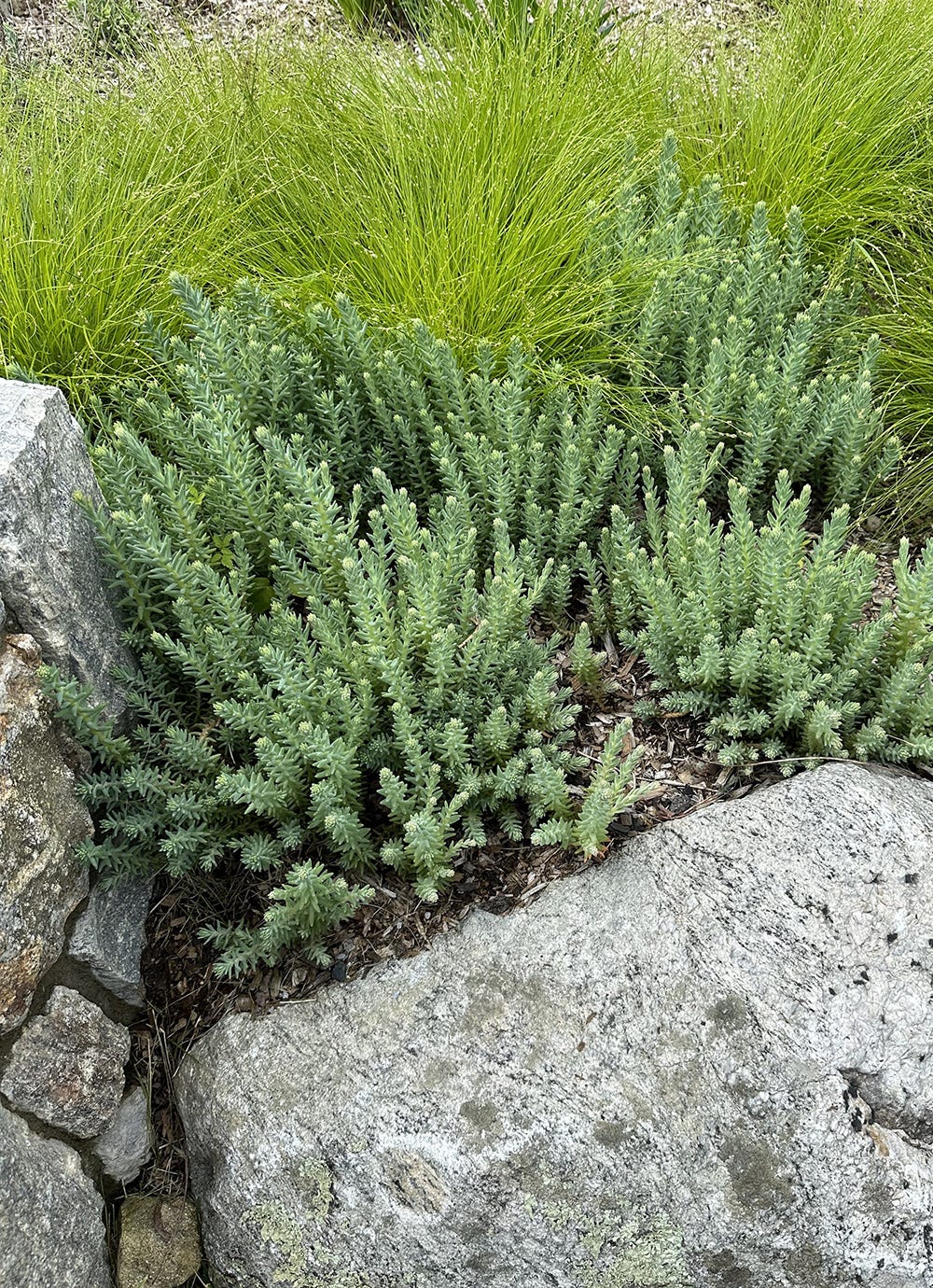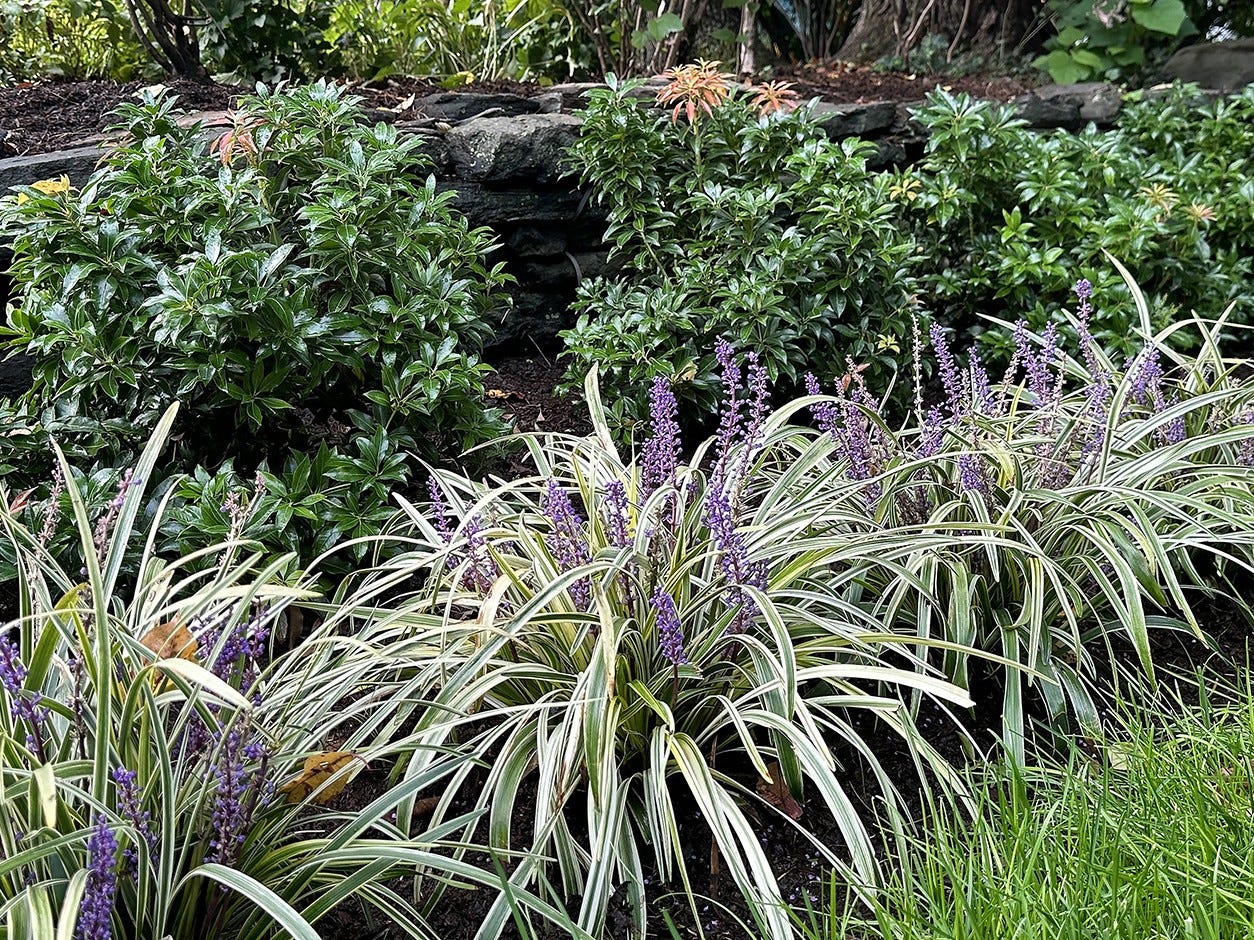
Up in front! The flowers or foliage that edge the front of a plant bed complete the display. Like a cuff on a shirt sleeve, low-growing plants or flowers finish off a planting nicely. They are the important first layer in a tiered planting.
A common question is, ‘how high should front row plants be’? That depends on how close you are to the planting area. If it is normally viewed from a distance - like across a lawn or terrace - the height of edging plants can be as high as 2 ft tall. In beds that are viewed up close, the edging plants should be lower than that. The following is a few suggested front of edging plants.
Liriope and Sedge - Soft, Flowing Form
A grassy edge defines a plant bed and accentuates it. Low-growing plants with fine grass-like foliage such as lilyturf (Liriope) and sedge (Carex), when planted in a continuous ribbon, create a loose but tidy border that gently cascades at the front of a bed. This visually softens the transition from lawn, walkways, or paving. It also acts as a unifying design element.
And some varieties of these are evergreen (or semi-evergreen in colder zones) which helps when other plants go dormant or die back in winter. Sedge prefers part shade and works well in woodland or naturalistic settings. Liriope tolerates sun or shade, making it a versatile option.

I particularly like the perennial variegated liriope (Liriope muscari 'Variegata') because it is low-maintenance, grows no taller than 18”, and adds brightness to garden beds. Its most prominent feature is its arching green leaves with creamy yellow or white edges. Evergreen in warmer climates (zones 7–10), semi-evergreen or deciduous in cooler areas.
‘Profusion’ Zinnia - A Vibrant Sun-Loving Flower
Keep reading with a 7-day free trial
Subscribe to Gardentopia to keep reading this post and get 7 days of free access to the full post archives.

